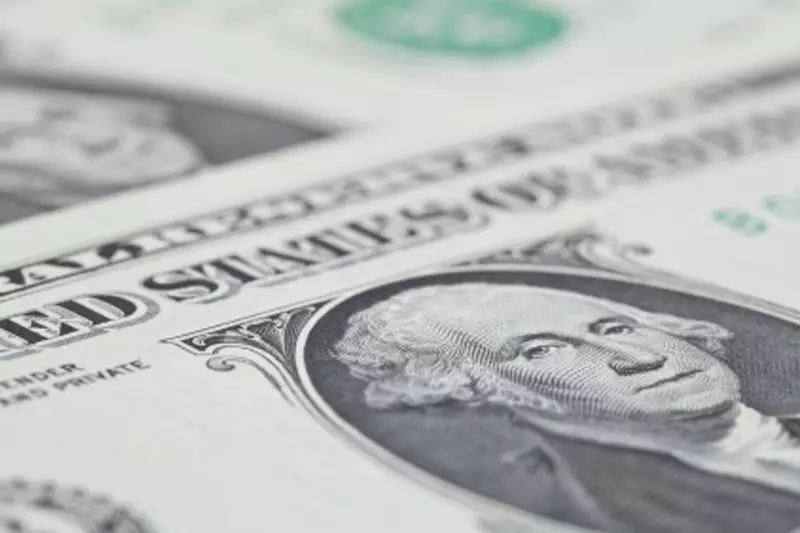The U.S. dollar has experienced a minor decline recently, retreating from its six-month high as traders anticipate critical inflation data that could influence future interest rate decisions. At a notable moment on a Wednesday morning, the Dollar Index, which measures the value of the greenback against a collection of six key foreign currencies, indicated a slight decrease of 0.1%, settling at 105.850. This decline follows the dollar’s rise above the 106 mark for the first time since May, reflecting growing investor optimism that the currency would continue its upward trajectory.
The recent surge in the dollar can primarily be attributed to the outcomes of the U.S. presidential election, wherein Donald Trump’s victory has prompted speculation about a more favorable economic policy environment. As the Republican party appears poised to consolidate its hold on Congress, expectations for reduced taxes and eased trade tariffs are prevalent. Such policies are projected to provoke inflationary pressures, thereby affecting monetary policy frameworks.
The Significance of Upcoming Inflation Data
Market participants are now focusing their attention on the impending release of the U.S. Consumer Price Index (CPI) for October, a pivotal indicator. Economists forecast a potential increase in annual headline inflation growth, rising from 2.4% in September to an anticipated 2.6% in October. Furthermore, core inflation, which excludes volatile categories like food and fuel, is projected to maintain a consistent year-on-year increase of 3.3%. These figures are particularly relevant as members of the Federal Reserve prepare to evaluate their interest rate strategy for the remainder of this year and into 2025.
Analysts from ING suggest that the robust dollar performance is already partially reflecting the implications of Trump’s economic strategy. They caution, however, that forthcoming data releases and dovish comments from the Fed may prompt investors to capitalize on existing bullish dollar positions, indicating a possible shift in market sentiment.
Across the Atlantic, the Euro is experiencing its own set of challenges, with trading patterns reflecting broader geopolitical concerns. The EUR/USD pair remained relatively stable at 1.0627, inching closer to a year-long low. This stagnation can be attributed to heightened political uncertainty in Germany, particularly following the collapse of Chancellor Olaf Scholz’s governing coalition. The country is now preparing for snap elections, further complicating the Eurozone’s economic outlook.
Market speculations suggest that the European Central Bank (ECB) might adopt more aggressive rate cuts than its American counterpart in light of expected tariff impacts on economic growth. According to analysts, the current pricing of EUR/USD does not appear to incorporate significant additional risk, as expectations align with anticipated monetary policy adjustments.
Meanwhile, the British Pound has shown signs of resilience, creeping above the recent three-month low following a second interest rate cut by the Bank of England this year. Currently priced at 1.2750 against the U.S. dollar, market focus shifts to upcoming commentary from Catherine Mann, a key figure at the Bank of England known for her hawkish perspective. Observers are eager for insights regarding how recent budgetary decisions may influence the central bank’s monetary policy stance and the implications for jobs and wages in the current economy.
In addition to the fluctuations in GBP/USD, other currency pairs like USD/CNY have seen deviations, with the U.S. dollar experiencing a slight drop against the Chinese Yuan. Market reactions have been driven by China’s tepid fiscal responses amid growing economic challenges exacerbated by a potentially hostile U.S. trade environment under the Trump administration. However, the USD/JPY pair has shown a slight appreciation, with investors considering Japan’s complex political landscape and the implications of prolonged interest rate disparities between the U.S. and Japan.
The intricacies of the U.S. dollar’s performance against global currencies highlight how interconnected economic indicators, political developments, and central bank policies can shape market expectations. As traders and economists square up to scrutinize forthcoming inflation data, all eyes will be on the Federal Reserve’s response and the wider ramifications for both domestic and international economies. The evolving interplay of these elements underscores the unpredictable nature of currency markets and the myriad factors influencing investor sentiment in this high-stakes financial arena.


Leave a Reply